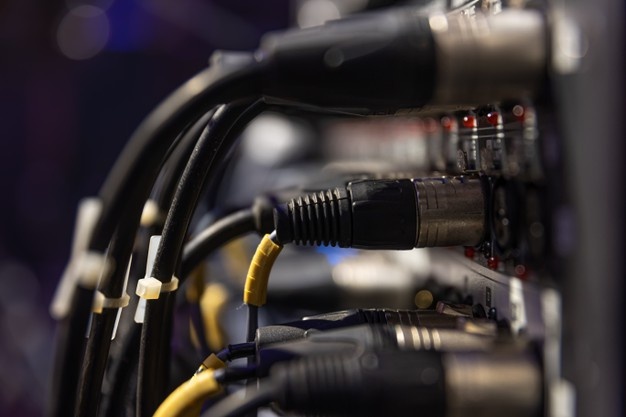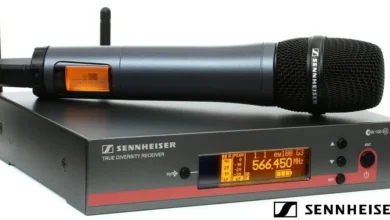

What amplifier to choose for acoustics? This is one of the most important issues when building a sound reproduction system. Here we will talk about stereos.
One category of people first of all acquires acoustics, then an amplifier for it, while others start with an amplifier. But in the end, after all, the acoustic system, together with the room where it is installed, produces sound, and the role of the amplifier is to fully reveal the acoustics to which it will be connected.
The amplifier can give a monitor or emotional character to the sound of a particular speaker system. Someone buys a tube amplifier, someone is a transistor, and still others are a hybrid (the input amplifier stage is built on tubes, the final one is on transistors). Here lamps and transistors are amplifying elements of equipment. You can also purchase a complete amplifier at once, which is also called integral, where the preliminary amplification path is in one case with the final one, or separately – the preamplifier in one case, the final one – in the other. The character and quality of sound are primarily influenced by the preamplifier/amplification stage, while the final one serves as a kind of buffer between the preamplifier and the acoustics, which often also greatly affects the sound quality in the end.
The amplifier must have a power reserve to comfortably listen at low volumes, as well as at high volumes without distortion. As they say, there is never a lot of power, and I agree with that.
If we talk about a transistor amplifier (the circuit can be on bipolar or field-effect transistors), it has a higher efficiency than amplifiers whose amplification circuit is built on lamps, high reliability and ease of use. But there are also features (or disadvantages). In a transistor amplifier, one cannot do without the use of such a circuit solution as OOS (negative feedback), which can be both local and general. This is done to minimize harmonic distortion and to obtain an acceptable output impedance for matching the amplifier to the speaker system. By using high-quality transistors, you can avoid the use of a common OS and use only local OSs, since common feedback introduces into the signal larger values than local intermodulation distortions,
A good tube amplifier is very expensive and has a lower efficiency, but they have no OOS, it is easier to match it with acoustics in terms of its internal resistance, and it has simple circuitry. A good tube amplifier weighs a lot, thanks to the use of an output transformer to match the acoustics, which ultimately affects the sound. However, the consequences of using a transformer are much less than those of using negative feedback.As a summary, we can say the following – listen, compare various amplifiers, and acoustic systems, using as much material as possible and stop at what you like and, so to speak, lay on your heart.
Among the manufacturers of transistor amplifiers, I want to note: Bryston, Burmester, Redgum, Dan D’Agostino, Exposure, upper Denon models, upper Yamaha models, Accustic Arts, Sim Audio, Gato Audio, Plinius, among tube amplifiers: Leben, Audio Research, Air Tight, Conrad-Johnson, Acoustic Masterpiece, Copland. However, there are manufacturers worth noting that operate in both segments. This is McIntosh, Cary Audio Design.
You May Like: Amplify Your Workout: Finding The Best Amplifier For Gym
I especially want to mention Copland and Leben. As a rule, tube amplifiers for the most part have a low output power and, accordingly, it is most comfortable for them to work with highly sensitive acoustics. This does not apply to Copland, which is a kind of miracle of Scandinavian technology. He has, in my opinion, only advantages both like the sound and in the ability to control “heavy” acoustics. Leben has the shortest signal path, a completely surface-mounted installation without the use of printed circuit boards, and a selective element base. The depth (if we talk about the 300th ruler) is only 26 cm, and in terms of weight, it is very heavy. And it is made in retro style, here many people follow the path of acquiring an amplifier first, and then acoustics.
From transistor – Dan D’Agostino. These amplifiers are truly marvels of sound reinforcement technology from a highly respected American manufacturer. A milled one-piece aluminum case, diffusion cooling of the amplifier, its numerous transistors, of which there are more than a dozen, in some amplifiers, a transformer that occupies about half of the case, of high quality, which ideally matches the amplifiers with the speaker systems. Made only by hand in the USA, these amplifiers, for the most part, have the so beloved arrows. The amplifiers have no overall negative feedback at all, so there is practically no intermodulation distortion. The products have tremendous dynamics and large bandwidths (1Hz – 200kHz (-1dB)). Up to 40 W amplifiers operate in class A. The housing is protected from electromagnetic and high-frequency interference. I had to listen to amplifiers of this manufacturer with Vienna acoustics, which are very demanding on the amplifying part, the result exceeded all expectations. The amplifiers also coped well with Focal Sopra, and ATC, which are also not so easy to please)), especially they played well in conjunction with acoustic systems from the Estonian manufacturer Estelon.







Thanks for publishing such great knowledge. You are doing such a great job. This info is very informative for everyone. Keep it up. Thanks for sharing it once again. VST Tractor